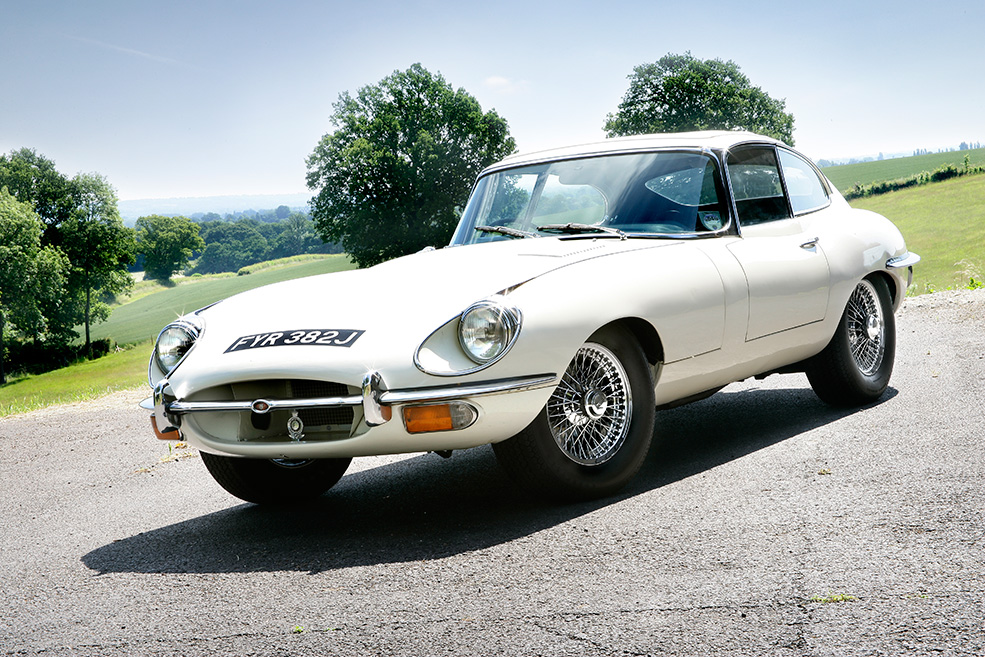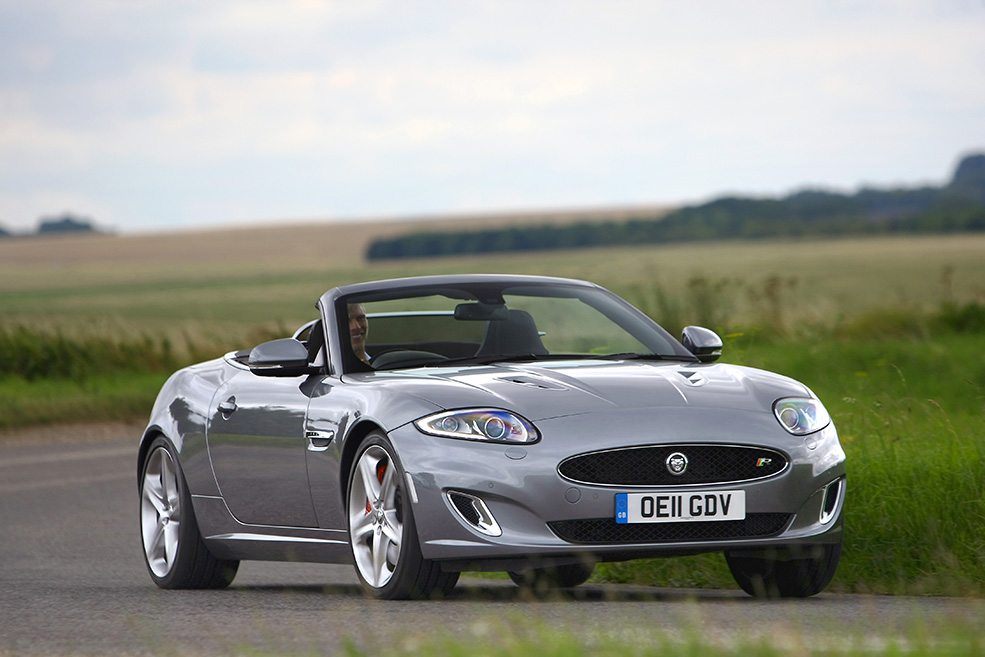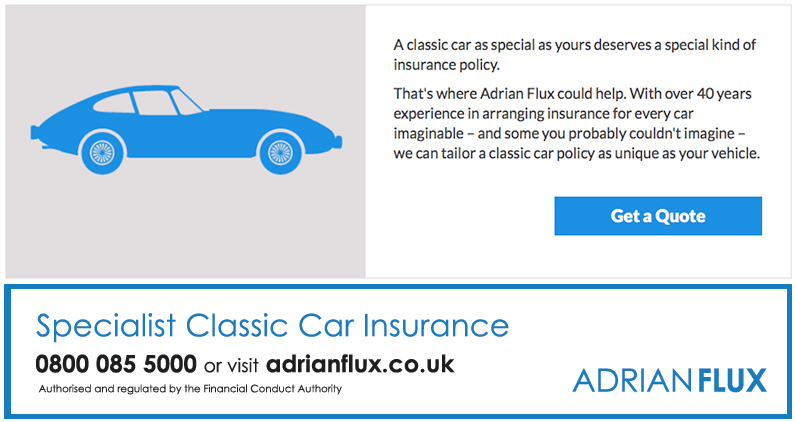Welcome to Old School vs New School where we visit the controversial subject of traditional classics compared to their more youthful equivalents. This time, the Jaguar E-Type vs Jaguar XKR…
Just as today’s paper is tomorrow’s chip wrappers, so each modern classic will eventually take its accepted place in the line-up of cherished classics at a car show of the future and we’ve picked another selection we reckon offer a good illustration of the changing tastes.

OLD SCHOOL: JAGUAR E-TYPE
TECH SPEC
Engine: 3532cc
Power: 165bhp
Top speed: 106mph
Fuel consumption: 15mpg
Gearbox: five-speed manual
What can we say about the E-Type which hasn’t already been printed many times before? The car which really put Jaguar on the map, the car is one of the few classics which genuinely justifies the term ‘icon’ and is still recognisable on greetings cards to people who have never displayed the slightest interest in old cars.
Time was when you could consider an E-Type in the same breath as the more expensive end of the MGB market but those days are long gone. As an illustration, I’ve just looked back in our archives at a feature we ran back in 2011 covering ‘affordable’ E-Types. Even back then prices were rising rapidly but we reckoned the more affordable examples – the left-hooker 2+2 Series 3 V12s – could be picked up for high teens.
Not any more they can’t: just last week I found myself looking at the US import featured as a Tried and Tested which I commented looked like good value at £22,000 despite being a non-running project, while an up-and-running 2+2 V12 automatic is now well over the £30,000 mark. As for the original UK-market right-hand drive Series 1 and Series 2 cars, your budget needs to be north of £100,000 to acquire a nice example especially if it’s a roadster you want.
That tells you a lot about the investment market for cars at this level but also a lot about the car’s appeal. Back then they were new, the E-Type was something of a bargain, undercutting the Italian exotica massively on price but offering crushing performance. Even by today’s standards the earliest of E-Types remains a fast car, with the later 4.2-litre a formidable beast which brings with it evocative images of Le Mans-winning D-Types.
And then there’s the looks of the thing. Although never formally trained in car styling, William Lyons clearly had a gift to say the least and the elegant curves of the E-Type are recognisable the world over. In fact it’s a little-known fact that the earliest attempts at styling Jaguar’s XJ saloons centred around a four-door interpretation of the E-Type and in the grainy archive photos even that unpromising idea looks superb.
WHAT’S THE APPEAL?
Perhaps surprisingly, the different E-Type generations appeal in very different ways. The early ‘flat floor’ cars are hard work to drive and newcomers excited at experiencing the E-Type dream are often disappointed at the very early-’60s driving experience. Yes, they’re quick but they’re also hard work and uncomfortable but if you love classic Jaguars then the early E-Type is your goal and never mind any of the shortcomings.
The later Series 2 cars are more civilised and really very usable too. Although owners don’t tend to drive them particularly hard these days, there’s a satisfaction to be gained from knowing that your 50-year-old car could make a good showing of itself from the lights against a new Golf GTI.
For most owners these days though, the joy is in simply admiring its curves and enjoying the beauty of the thing, enjoying it on sunny days and appreciating the history which it embodies.
OWNING THEM
Parts supply for the E-Type is unrivalled, certainly on a par with the MGB and its ilk and the rising values have made it worthwhile for any obsolete parts to be remanufactured.
For the most, parts aren’t expensive either – although the massive bonnet assembly will set you back a hefty £5k or more – and by modern standards the E-Type isn’t a complex car. In fact a keen enthusiast can easily look after one at home.
Unfortunately, he’d often be wise not to do so, since once again the car’s value makes its impact felt: at this price level, buyers want to see evidence of specialist attention and too much amateur spannering will hit values.
BUYING THEM
• Like anything made in Britain in the ’60s an E-Type will rot. Most have been restored properly but it still pays to inspect it carefully.
• Sills and floorpans are easy to check, as are engine frames and their attachment points.
• Rear steering or jolts under acceleration/deceleration can indicate trouble. Rebuilding the IRS can mount up to £2000 or more.
• Interiors can be expensive to restore, more so on the larger 2+2.
• Engines are largely reliable and trouble should be obvious.
• it sounds obvious but check the car’s provenance. Is it an original RHD car? if LHD has it really come from a dry state?
VALUES
Your entry ticket to E-Type ownership is something like one of the easier rebuild projects for around £20,000 but expect it to be a long-term project involving plenty of hard work and bodyshop costs. For a running car, you’re looking at a minimum of £30,000 for a left-hand drive V12 automatic 2+2, with prices rising from here to the £70,000 you’ll need for a right-hand drive Series 2 coupe and the £100,000+ commanded by a roadster.
INSURING THEM
To cover a 1969 Jaguar E-Type 2+2 worth £60,000 you’re looking at £200 with £150 accidental damage, fire and theft excess through Adrian Flux.
Quotes are based on a 45-year-old male, second vehicle. The car is garaged, covers 3000 miles a year and lives in an SP2 postcode. He has no claims or convictions, is a club member, and is employed as a marketing manager. Comprehensive cover quotes were supplied by Adrian Flux and include free legal cover and optional agreed value. You can get your own quote at Adrian Flux or on 0800 085 5000..

NEW SCHOOL: JAGUAR XKR
TECH SPEC
Engine: 3532cc
Power: 154bhp
Top speed: 100mph
Fuel consumption: 20mpg
Gearbox: five-speed manual
It seems we’ve only just accepted the XK8 as a modern classic and already we’re considering that car’s replacement as another modern classic but time never stands still even in the world of old cars and the 2005-on Jaguar XK and XKR – known internally by the codename X150 – was itself unveiled 13 years ago.
Although they may look at first glance to be broadly similar, look again and you’ll see that the two cars are dramatically different.
The second-generation XK was based on an all-new platform which finally laid to rest the ghost of the XJ-S which had formed a large part of the X100’s structure. The new floorpan pushed the front axle further forwards to allow the cabin to sit more centrally and lose the saloon car-like proportioning of the older cars as well as allowing better 2+2 seating.
The new platform also broke with tradition in that it used the same bonded and riveted aluminium construction as had been debuted with the ‘X350’ XJ in 2001. This allowed the finished coupe to weigh in at under 1600kg and to reinforce the new high-tech approach the styling broke with tradition, adding sharp creases to the familiar Jaguar forms although the familiar elliptical grille opening remained to evoke memories of the E-Type.
WHAT’S THE APPEAL?
To understand the appeal of the XK it’s perhaps best not to think about it as a modern classic but as an affordable entry into a very modern car which can hold its own against some really very credible blue-chip competition.
After all, the X150 remained in production until 2014 and its state-of-the-art specification still wouldn’t look out of date if it was launched today.
As launched, it carried over the 4.2-litre V8 from the XK8 in 300bhp normally aspirated and 420bhp supercharged guise, these units upgraded to the new direct-injection 5-litre unit in 2009, rated at 385bhp and a mighty 510bhp respectively.
Various special editions would see the wick turned up even further, with the 2011 XKR-S boasting no less than 542bhp alongside special suspension and brakes which made it a real weapon both on road and track.
The performance is delivered in a very modern way, these being the modern crop of GTs which are as easy to drive flat-out as they are to potter to the shops. Having sampled several XKs on track courtesy of jaguar it’s impressive to see just how well they can hustle when asked. And in that respect the XK is a direct descendant of the 1961 E-Type.
OWNING THEM
These are modern cars and really shouldn’t be any harder to live with than a Golf. They’re essentially aluminium although care should be taken to ensure that the steel componentry doesn’t rust but they don’t come with the added complication of the aluminium XJ’s air suspension.
The X150 is affordable to buy now but don’t forget that in many ways they still carry the running costs of a £60,000 car: the smallest wheel offered was an 18-inch rim and tyres will never be cheap, although fuel economy is no worse than its predecessor, meaning just over 30 mpg is possible with care.
As for the mundane practicalities, the X150 offers greater boot space than its predecessor courtesy of the US-market’s desire to carry two golf bags, while the rear seats offer more space too.
BUYING THEM
• The correct oil is crucial. Reports suggest that the supercharged engines can become loose if the wrong grade is used.
• The variable cam timing on the XKR can become noisy.
• Otherwise engines are robust if they’ve not been neglected or overheated.
• Electronic CATS dampers were standardised shortly after launch and can be expensive to replace.
• Aluminium bodywork can dent easily so check the sides for ripples and car park dings.
VALUES
Believe it or not, prices start at just under the £10,000 mark for miley (130k+) examples of the X150 coupe. A budget of £12,000 opens up a big selection of 70-80,000-mile examples… your choice at this price level also including the supercharged XKR. From this point prices run upwards to around the £37,000 mark for the pre-facelift cars, with your extra cash buying little more than fewer miles and a different plate. Remember all those stories of £500 E-Types? This could be your second chance…
INSURING THEM
To cover a 2006 Jaguar XKR worth £20,000 you’re looking at £300 with £200 accidental damage, fire and theft excess through Adrian Flux.
Quotes are based on a 45-year-old male, second vehicle. The car is garaged, covers 3000 miles a year and lives in an SP2 postcode. He has no claims or convictions, is a club member, and is employed as a marketing manager. Comprehensive cover quotes were supplied by Adrian Flux and include free legal cover and optional agreed value. You can get your own quote at Adrian Flux or on 0800 085 5000.
OLD SCHOOL VS NEW SCHOOL SERIES
Thinking of getting your hands on a modern classic car? Well keep an eye on Classics World for the next of our old school vs new school classics feature, where we will visit the controversial subject of traditional classics compared to their more youthful equivalents.






